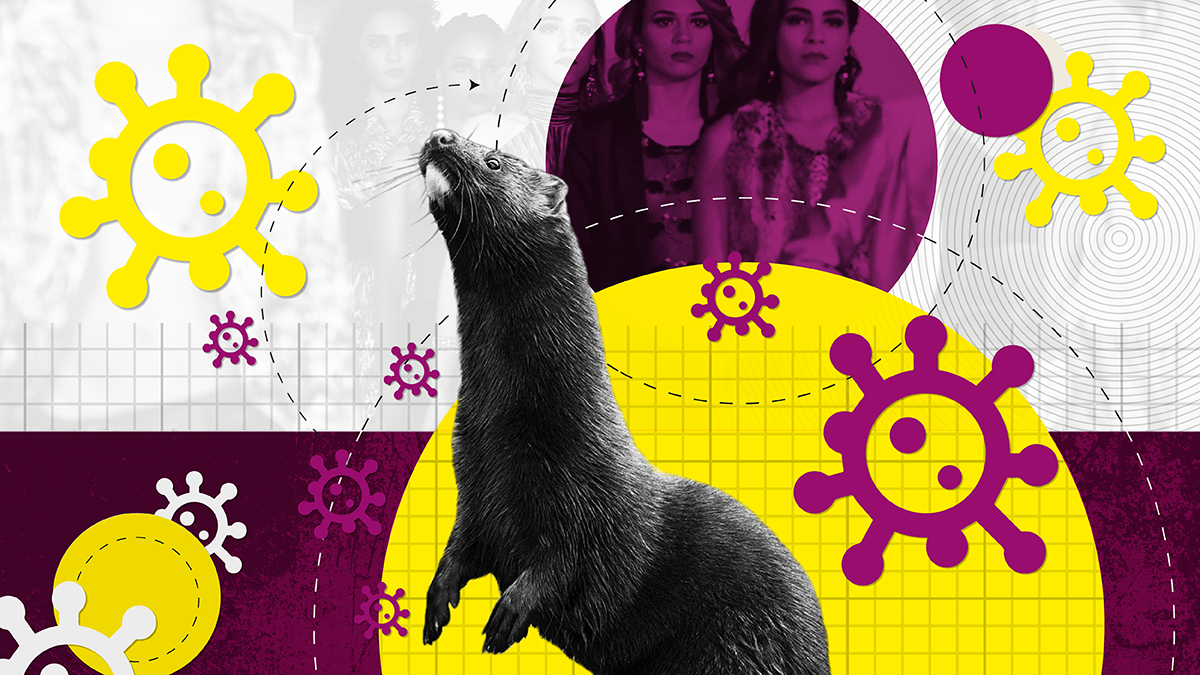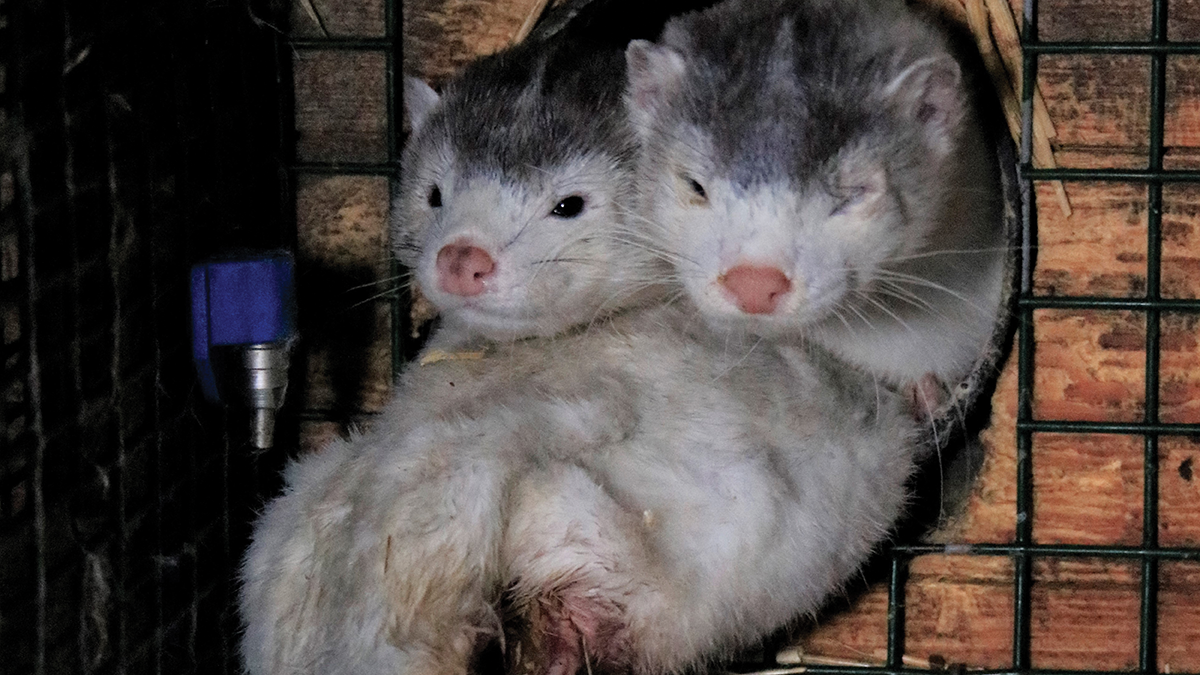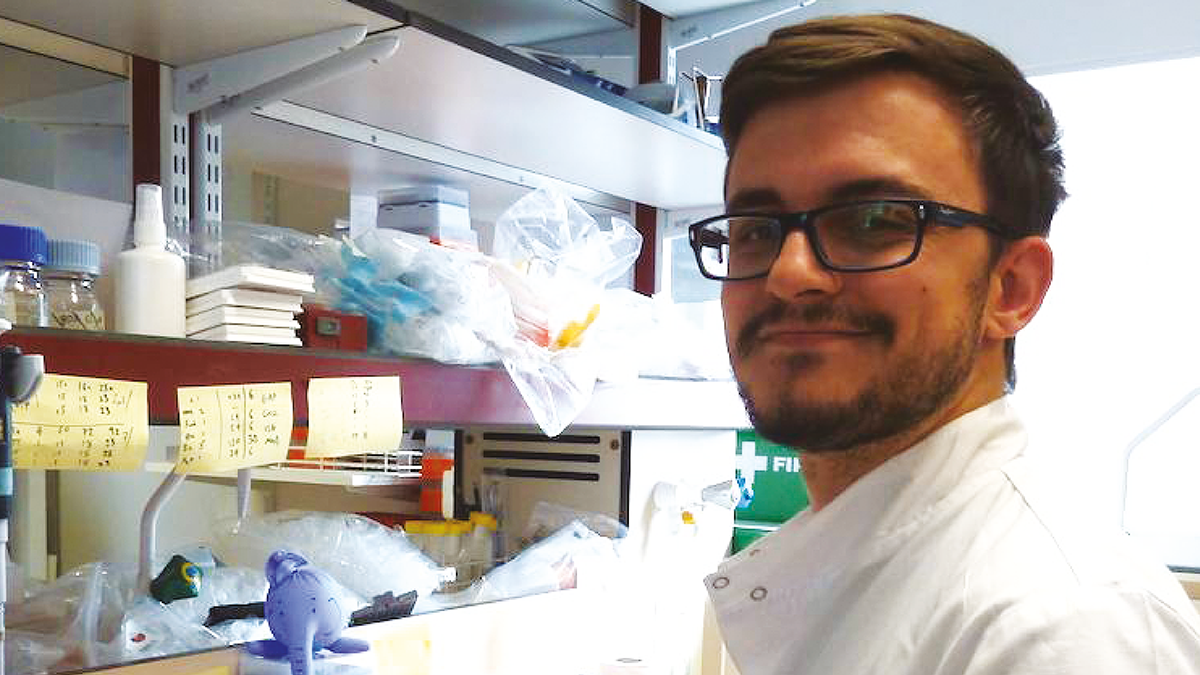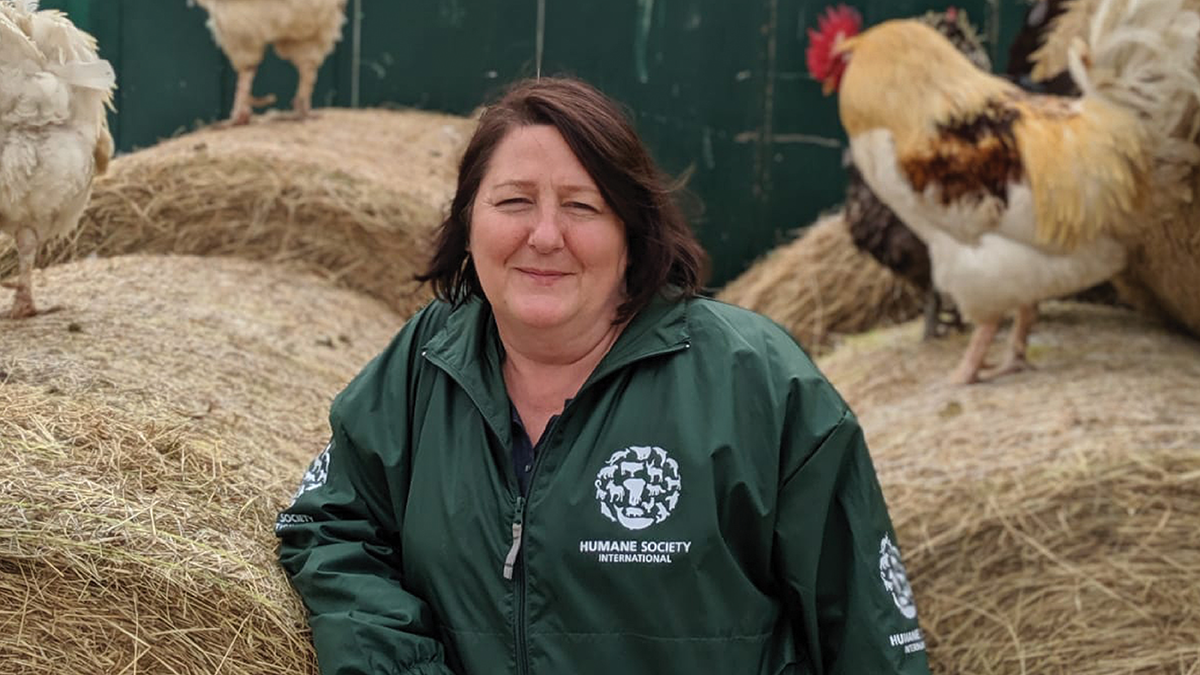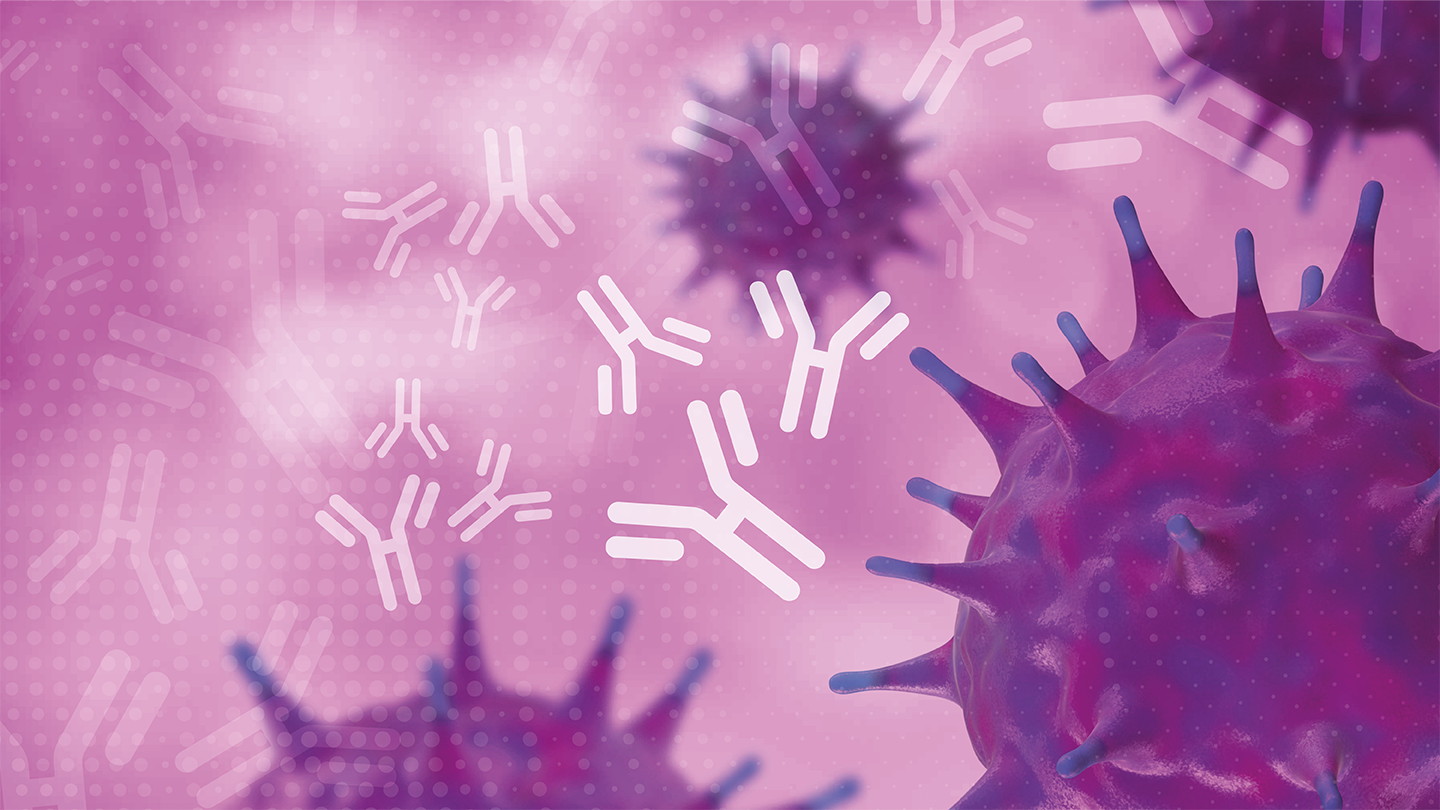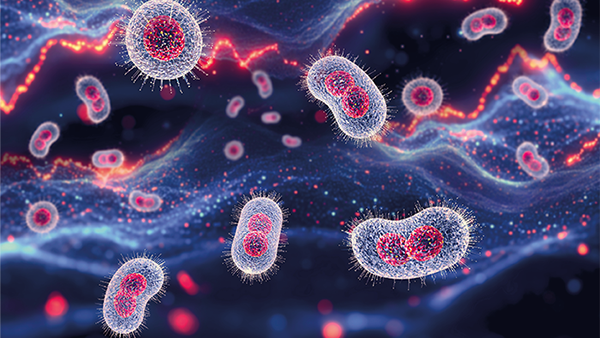Virus in Furs
How fashion-fueled mink farms are the perfect petri dish for a future pandemic
Going once. Going twice. Gone. The gavel rattled out at the Finnish auction house – Saga Furs – where a fervent atmosphere gripped the room. Palomino, blue iris, and pearl cross – were just a few of the mink colors on offer in the hall, where 220 eager buyers had flocked to battle it out for premium pelts. The nine-day auction that took place in June this year sold 8.2 million euros worth of mink furs and brokerage sales peaked to 111 million euros (1). And while this great sum circulates the Finnish economy, scientists around the world are raising the alarm on the global health implications rooted at the very source of these raw materials: fur farms.
Zoonoses are infectious diseases that can jump from animals to humans. According to the US Centers for Disease Control and Prevention, it is estimated that 75 percent of emerging infectious diseases in humans are zoonotic (2). One only has to look at COVID-19 to see the profound effects of a pandemic of (likely) zoonotic origin. But many others have emerged over just the last few decades. The 2002 SARS outbreak infected over 8000 people and was thought to have emerged from an intermediary animal host – the palm civet (3); virological evidence for MERS-CoV, which was first identified in Saudi Arabia in 2012, suggests it may have started from contact with dromedary camels (4); and fruit bats are thought to be crucial to the spread of Ebola – which has killed over 15,000 since 1976.
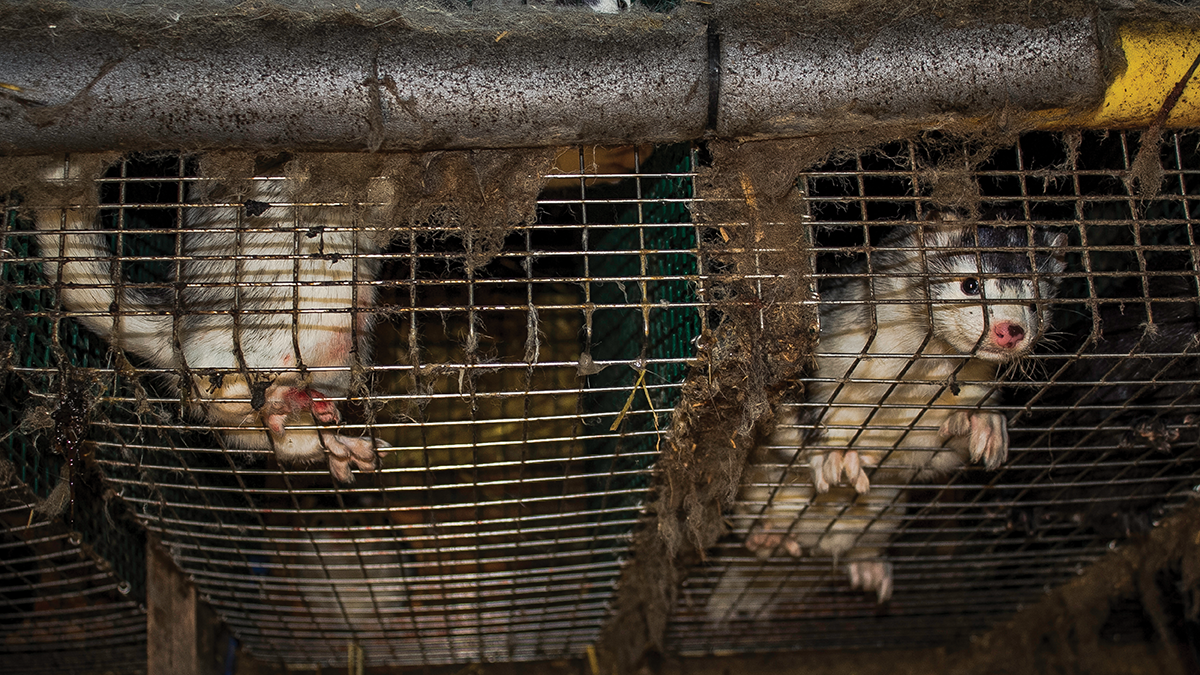
Ninety percent of the fur sold to the fashion industry is sourced from animals raised on factory farms, which is sold in auction houses like the one detailed above (5). In 2000, the UK was the first European country to ban fur farming. Many followed the example, including Austria and Norway. More recently, bans have crossed the Atlantic, with California banning fur sales earlier this year. It is unsurprising, then, that the anti-fur movement has gained influence over fashion houses. Popular brands like Chanel, Alexander McQueen, and Gucci have cut ties with all animal pelts, and, in 2018, The British Fashion Council announced that London Fashion Week would no longer showcase animal fur.
However, according to data from 2021, demand remains high (6). Globally, China is the largest producer of mink and also the largest consumer of fur. Other notable producers include the US, which produced 1.4 million pelts in 2021, and Russia, which produced 1.2 million. These countries lack federal regulations compounded with little-to-no state regulations for fur production facilities. And though Kopenhagen Furs – the world’s largest auction house for pelts – pledged to wind down their sales in 2020, a quick web search brings up auction dates to as far in the future as August 2024 (7). Not only is the practice of these fur farms deemed “inherently inhumane” by Humane Society International, but tight confinement of stressed mink in unsanitary conditions is a hotbed for potential zoonotic spillover (8).
So, let’s turn our heads to the avian influenza threat brewing in mink fur farms. The level of alarm is so great that in July 2023, Thomas Peacock and Wendy Barclay – two leading virologists from Imperial College London’s Department of Infectious Disease – published a paper that emphasized the severity of mink farming and its risk to public health (9). We were lucky enough to speak to Peacock, as well as Shely Bryan, fur free campaigner and senior advisor at Humane Society International, to investigate one crucial question. Is mink farming a ticking time bomb for a potential pandemic?
Why mink?
“Farmed mink are susceptible to Aleutian disease, which has zoonotic potential, and they can also contract human and avian influenza A viruses (AIVs),” says Bryan. “This raises concern that they could be ‘mixing vessels’ for reassortment of circulating influenza viruses. But by far the biggest focus right now is the susceptibility of mink to both SARS-CoV-2 and, most recently, to highly pathogenic avian influenza A (H5N1).”
In 1996, H5N1 was first detected at a domestic waterfowl farm in Southern China. Between 2003 and 2005, wild birds spread H5N1 to poultry, who were affected in Africa, Europe, and the Middle East. And now, a new clade – 2.3.4.4b – has spread wider and faster than previous variants, ravaging poultry industries worldwide. In May 2023, the WHO released a statement on H5N1, stating: “Given the widespread circulation in birds and the constantly evolving nature of influenza viruses, WHO stresses the importance of global surveillance to detect virological, epidemiological, and clinical changes associated with circulating influenza viruses which may affect human (or animal) health (10).”
When I spoke with Peacock, I was eager to understand the zoonotic potential of avian influenza, and its risk to public health. “AIVs do not replicate very well in humans – they’re restricted in a lot of ways,” he tells me. “To infect a human, and for the virus to be passed on – the virus needs to change a number of its properties. There are a lot of factors that stop H5N1 from infecting humans. But one way that a virus can find a way around this is by adapting to an intermediate species.”
This information made me pause. So why is mink farming more of a concern than other forms of animal agriculture? Why are mink so susceptible to viral infections? “It’s true that one of the biggest risks to humans in terms of H5N1 is through poultry,” Peacock clarifies. “But the biggest difference? Sustained circulation of H5N1 within mink could drive the selection of a virus that could transmit by the airborne route. The virus does not adapt the same way in poultry.”
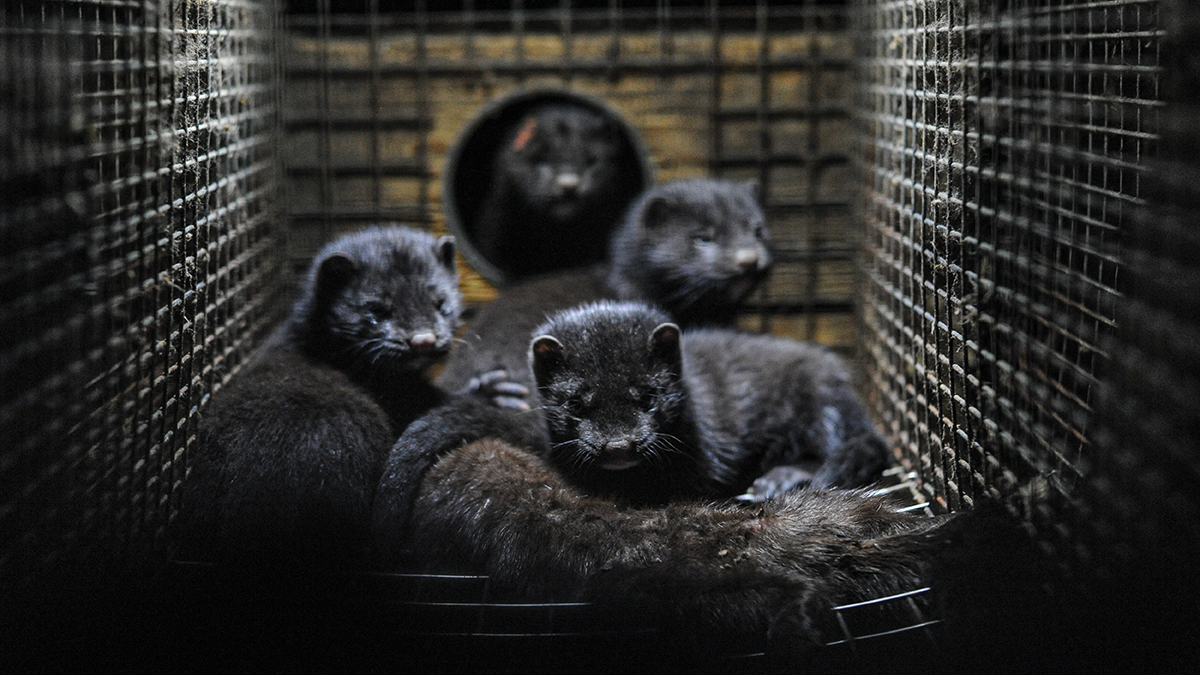
Peacock went on to describe the “ferret model” of viral pathogenesis – the gold standard for understanding influenza airborne transmission. The model uses two cages where two ferrets are separated with a partition that allows airflow exchange – one ferret is infected with the virus, while the other is closely monitored to see if it gets infected. The ferret respiratory tract is widely considered to resemble that of humans. Not only do they share similar lung physiology and sialic acid (SA) receptor distribution, but upper respiratory symptoms of the flu – such as coughing and sneezing – are common in both ferrets and people (11). “Ferrets have some strange genetic quirks,” says Peacock. “We think – though we don’t know for sure – that mink also have a respiratory tract that looks a little bit more human than, say, a cat or a dog.” Similar to ferrets, the SA receptors SA-α-2,3-Gal and SA-α-2,6-Gal are both found in the respiratory tracts of mink (11).
A study published in 2019 found that mink could be infected by more subtypes of influenza A viruses than swine – a species that have long been considered the primary intermediate host for influenza strains after the emergence of pandemic H1N1 influenza virus in 2009 (12). It was also discovered that mink had the highest diversity, richness, and evenness of influenza subtypes – whereas pigs could only be infected with limited subtypes of IAV, and seemed to be resistant to H5N1. The researchers concluded that mink need to be taken “more seriously in influenza surveillance.”
Fur farms
Fur farms are well-known to be cramped, squalid places, where thousands of caged animals are crammed together in low welfare conditions – not dissimilar to the ferret model of pathogenesis. Although these factors alone create an ideal recipe for viral transmission, mink are especially vulnerable to disease – not only because of their biological makeup, but also because wild mink are solitary, highly territorial creatures. They are also semi-aquatic – and their thick pelage and webbed feet allow them to hunt in a range of territories. In fur farms, the ability to express such natural behaviors are denied, which leads to a serious host of health implications, including self-mutilation, fighting, and immunocompromisation.
“In these farms, mink rarely get the opportunity to swim, which only exacerbates their stress,” says Peacock. “If they are exposed to the virus, they’re less likely to fight it off which will make it easier for the virus to spread to other mink – who are also stressed out. It’s a vicious cycle – and just another factor at play here.”
Bryan explains further: “Stress-induced hormonal changes, such as increased cortisol being released into the bloodstream, can impair the activity of immune cells like macrophages and neutrophils, which lessens an animal’s chance of removing pathogens during the early stages of infection.
“Stress can also compromise the integrity of the gastrointestinal and respiratory mucosal barriers essential for preventing pathogens taking hold, and stress-induced changes in the gut environment can also lead to a weakening of the protective effects of the gut microbiota, making the animals more susceptible to infections and reducing their ability to digest and absorb nutrients properly.”
Transmission is also facilitated by the animals’ genetic diversity, which is low on farms in which a select few males are continuously sired. The mink are also exposed to a plethora of viruses, brought in by farmers and contaminated poultry products, which increases the chances of the animals being introduced to human and avian influenza A viruses. In short, a hypothetical route to co-infection is easy to envisage, according to Peacock and Barclay. The potential for mink to act as hosts for genetic reassortment is high, particularly between H5 subtype avian influenza viruses and human-adapted variants.
This concoction of chronically stressful conditions, use of highly predisposed animal species, and poor hygiene greatly increase the likelihood of viral transmission. Fur farms truly are “the perfect petri dish for zoonotic disease,” says an exasperated Bryan.
Recent outbreaks
The spread of COVID-19 in mink fur farms has been reported in multiple countries, including The Netherlands, Spain, Italy, and the US. In November 2020, Denmark made the unprecedented decision to cull their entire population of fur farmed mink after a mutated variant of SARS-CoV-2 was detected in the mammals; other measures – including biosecurity – proved inadequate to contain transmission (13).
At the end of 2022, however, the ban in Denmark was lifted. “The industry in Denmark is about one percent the size it was before the pandemic. It turns out that having a ban of two years made farmers move on and farm something else,” says Peacock. “I believe fur farming in Denmark is very heavily regulated compared with how it was before.”
Bryan agrees. “Overall, fur farming continues to decline globally with numbers of animals bred and killed tumbling across Europe, China, North America, and Russia.” But she also makes it clear that – without more information – it is impossible to know if fur farmers have learnt from COVID-19 outbreaks. “We don’t know how many countries continue to require regular testing for the virus on fur farms. What is clear is that animals continue to be confined to small cages, in large numbers, in close proximity to one another, and disease outbreaks continue to take place.”
In October 2022, mink at a fur farm in Galia, Spain, were observed to have bloody snouts, tremors, hypersalivation, and a loss of appetite (14). Death of mink increased at an alarming rate. Mortality continued to rise weekly, before plateauing at the end of the month. Confident the culprit was SARS-CoV-2, veterinary professionals collected oropharyngeal swabs from two of the affected mammals. The tests came back negative. Instead, the mink tested positive for H5N1 – the first documented case of highly pathogenic avian influenza H5N1 clade 2.3.4.4b in fur farm mink in Europe. Although none of the farm workers were infected, the speed of transmission pointed towards evidence that H5N1 spread from mink to mink – an uncommon trait of H5N1, which is usually only passed on through infected birds. The researchers who sequenced the samples found the virus polymerase had a mutation, T271A, in the PB2 gene – a major concern for global public health. “In all likelihood, we narrowly escaped a larger disaster, as the incident appears to have been contained,” write Peacock and Barclay in their recent paper (9).
But now, it seems history is repeating itself. In July 2023, H5N1 was detected across 20 fur farms across the South and Central Ostrobothnia regions of Finland, where samples confirmed signs of mammal adaptation in the PB2 genes T271A and E627K (15). Such mutations allow improved replication in mammalian cells, and may explain the reason for such rapid spread of disease. “I don’t know the exact chance – but I think there is certainly a possibility of a H5 pandemic arising from fur farming,” says Peacock. “It’s an industry that doesn’t really serve a huge purpose. It is also a dying industry. If we stop it early, it wouldn’t be a bad thing – not only for the poor mink, but also for human pandemic preparedness.”
And although Denmark and Finland are the first two recorded H5N1 outbreaks in farmed mink, Peacock worries about the countries that have stayed silent on the epidemic. “We’ve heard very little about the situation in Polish mink farms. If there’s H5N1 in Finnish mink farms, I wouldn’t be surprised to find it in Polish farms. They are either not being looked at or not being detected. Or they have recognized it’s an issue, but have not done anything about it. Currently, H5 is not a notifiable disease on mink farms. So, unlike poultry farms, mink farmers are not obliged to report a H5 outbreak to The World Organization for Animal Health. I hope this will be corrected because it seems absurd that you have to report it on a chicken farm, but you don’t have to report it on a mink farm.”
Protocols and regulations
Since the COVID-19 outbreaks on fur farms, precautions – such as increased biosecurity and active surveillance – have generally become more stringent. After the H5N1 outbreak in Finland, the Finnish Food Authority put steps into place to improve biosecurity at the farms. Culling sick animals, avoiding interactions with different livestock, and regular cleaning were just some of the protocols introduced (15).
Peacock emphasizes the importance of good biosecurity behavior. “If you’re a pathologist working with respiratory aerosols, wearing appropriate PPE and conducting your work in well ventilated areas is key,” he tells me. “And if you think samples may have H5N1, you need to make sure that you’re conducting appropriate fixation or inactivation protocols.”
However, the credibility of current biosecurity measures was questioned when they failed to contain the outbreak of SARS-CoV-2 in Danish mink farms. A study published in 2021 suggested how the very foundation of fur farming makes it hard to maintain a high level of biosecurity; the open-sided housing systems allow contact with wild birds that are potentially infected with avian influenza viruses (16).
Recent outbreaks of H5N1 have forced governing bodies to recognize fur farming as a public health threat. Earlier this year, the US made a decision to vaccinate California condor birds against H5N1 in a bid to contain transmission – but the challenge of unpredictable viral evolution and resistance remains (16). Most recently, the US introduced the Mink: Vectors for Infection Risk in the United States (VIRUS) Act, a bill that vows to ban mink farming in the US. The bill would phase out the practice over one year and offer a grant program to help farmers transition out of the industry. The UK has also joined in on this anti-mink momentum, and in June this year Conservative MP Giles Watling headed a debate in Westminster Hall about banning the import and sale of fur: “We are importing cruelty, and we are facilitating a trade that could very well be the source of the next pandemic (17).”
The WHO has also lobbied for more asymptomatic and symptomatic testing of those who may have been exposed to H5N1. “The WHO are trying to get a picture of how likely it is that people are going to be infected if they breathe in dust or aerosols that have been contaminated,” says Peacock. “So if you’re someone who has been exposed to H5N1 – such as veterinary pathologists or people who have been involved in culls – you should get tested, not only for your health but to help us better understand the public health risk of these viruses.”
The glaringly obvious solution would be to permanently stop fur farming – worldwide. The uncomfortable reality is that these dangerous and potentially devastating pathogenic breeding grounds exist for one reason: fashion. When more and more brands are choosing synthetic fur alternatives, it is these increasingly few holdovers – the companies so uncompromising to change – that threaten us all. H5N1 has yet to jump from mink to humans, but with disease so rife in these farms, it feels more a question of when than if. Like throwing darts in the dark, with enough tries – and time – you’ll eventually hit a bullseye.
“We must focus on the root causes of zoonotic disease to stop viruses before they spill over to the human population. Where we know there are risky practices, we should take urgent action to close them down now,” says Bryan.
Peacock and Bryan agree on what needs to be done. Fur farming should be in the same category of high-risk practices as the bushmeat trade and live animal markets. And they strongly urge governments to consider the mounting evidence pointing to the need to eliminate fur farming in the interest of pandemic preparedness.
This article originally appeared on our sister brand, The Pathologist.
Feature Artwork Credit: Holly Kuchera / Shutterstock.com and Chalo Garcia / Unsplash.com
THE EXPERTS
Thomas Peacock:
I’m a virologist, and I completed a PhD in virology about 10 years ago. I’m currently based at the Pirbright Institute, which is a big veterinary research institute in the UK. I also work at Imperial College London. These days, my research mostly revolves around avian influenza viruses and animal influenza viruses in general. Over the pandemic, I did quite a lot of work on SARS-CoV-2, as many virologists did. I’ve recently been involved with some big consortia in the UK that have been looking at the H5 influenza strain. The flu map consortium – led by the Animal and Plant Health Agency – is one that I have been deeply involved in. They do all the UK testing for H5 strains, along with Imperial, Pirbright, and the Roslin Institute in Edinburgh.
Shely Bryan:
I’ve worked in the animal protection movement for three decades, with a particular interest in wild animals. I’ve also been a specialist on the fur trade for Humane Society International for many years, and I am particularly interested in the economic and public health aspects of the trade.
References
Saga Furs (2023). Available at: bit.ly/3PipK9x.
Centers for Disease Control and Prevention (2021). Available at: bit.ly/3RocG58.
R Xu et al., Emerg Infect Dis, 10, 1030 (2004). PMID: 15207054.
H Han et al., J Gen Virol, 97, 274 (2016). PMID: 26572912.
Eurogroup for Animals, “The case against fur factory farming in Europe” (2023). Available at: bit.ly/48sy4MO.
Eurogroup for Animals, “Fur farming and public health” (2022). Available at: bit.ly/3ZjcWEl.
Kopenhagen Furs (2023). Available at: bit.ly/3rgEuh7.
Humane Society International (2023). Available at: bit.ly/3PLHtYp.
T Peacock, W S Barclay, Proc Natl Acad Sci U S A, 120 (2023). PMID: 37467264.
World Health Organization (2023). Available at: bit.ly/44UmWoE.
H Sun et al., Emerg Microbes Infect, 10, 472 (2021). PMID: 33657971.
P Zhao et al., Sci Rep, 9 (2019). PMID: 31406229.
H D Larsen et al., Euro Surveill, 26 (2021). PMID: 33541485.
M Agüero et al., Euro Surveill, 28 (2023). PMID: 36695488.
Erika Lindh et al., Euro Surveill, 28 (2023). PMID: 37535475.
S Kessler et al., Viruses, 13 (2021). PMID: 34835056.
UK Parliament (2023). Available at: bit.ly/46dd5LU.
